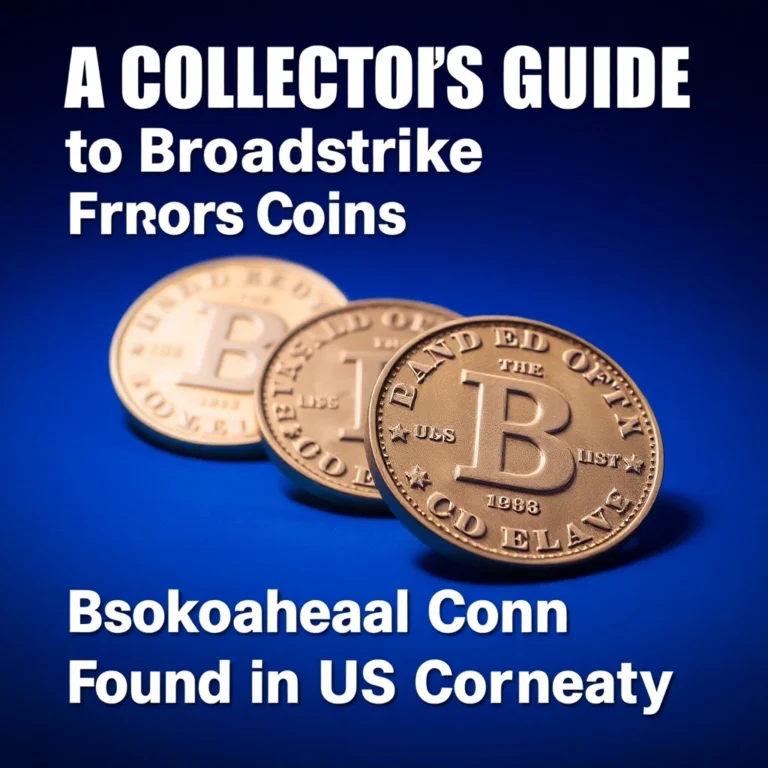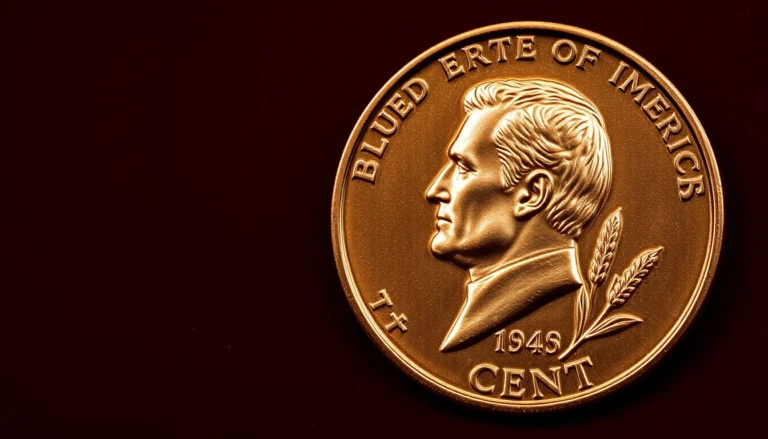Imagine holding a coin that defies the norm, a curious anomaly that sparks conversation and intrigue among collectors. Clipped planchet error coins, with their distinctive notches and incomplete edges, invite us into a world where minting mishaps become treasures. These coins are not just flawed currency; they’re captivating artifacts that embody the unpredictable nature of coin production.
For collectors, clipped planchet errors represent a thrilling intersection of rarity and history, offering a tangible connection to the minting process itself. In this article, you’ll discover the telltale signs of these enigmatic coins and uncover the stories that make them so sought after. We’ll guide you through the intricacies of identification, ensuring you can spot these gems in your own collection.
As we explore the nuances of clipped planchet error coins, prepare to be captivated by their unique charm and potential market value. Could your next numismatic treasure be hiding in plain sight?
The Fascination Behind Clipped Planchet Error Coins and How to Spot Them
Clipped Planchet Error Coins are a captivating segment of numismatics, attracting collectors with their unique production mishaps and historical intrigue. These coins are the result of a misstep during the minting process, offering a glimpse into the fascinating world of coin production errors.
Historical Background and Significance
The clipped planchet error has been a part of the numismatic landscape for as long as coins have been minted. The error occurs when a coin blank (or planchet) is improperly punched from the metal strip, resulting in a portion of the coin being missing. This error provides insight into the minting process and serves as a tangible reminder of the complexities involved in coin production. Over time, these coins have become valuable collectibles due to their rarity and the curiosity they inspire among both novice and seasoned collectors. 🪙
Physical Characteristics and Design
Clipped Planchet Error Coins are characterized by their incomplete edges, which can take on various shapes, such as curved or straight clips. The size and shape of the clip depend on where and how the planchet was cut. These coins often show signs of metal flow around the clipped area, which can affect the design details near the edge. Despite their imperfections, these coins maintain their original designs, albeit with a unique twist that makes each one distinct.
Mintage Figures and Rarity
While there are no specific mintage figures for clipped planchet errors due to their accidental nature, their rarity is dictated by the frequency of the error during a particular minting period. These errors can occur in any denomination and year, adding to the challenge and excitement of collecting. The rarity of a specific clipped coin can increase its desirability and value, particularly if the error is significant and the coin is otherwise in high-grade condition.
Known Varieties and Errors
Clipped planchet errors come in several varieties, including curved clips, straight clips, and ragged clips. Each type provides a different visual appeal and level of rarity. Additionally, other errors can occur simultaneously, such as off-center strikes, which can further enhance the coin’s uniqueness and value. Identifying and categorizing these varieties is a key aspect of collecting clipped planchet coins.
Value Information
Values for clipped planchet error coins vary widely depending on the coin’s denomination, year, type of clip, and overall condition. Below is a general guide to the value range for clipped planchet errors.
| Grade | Value Range |
|---|---|
| Good (G-4) | $10-$25 |
| Very Good (VG-8) | $20-$50 |
| Fine (F-12) | $40-$75 |
| Very Fine (VF-20) | $60-$150 |
| Extremely Fine (EF-40) | $100-$250 |
| About Uncirculated (AU-50) | $200-$400 |
| Mint State (MS-60) | $300-$600 |
| Gem Mint State (MS-65) | $500-$1,000+ |
Authentication Tips
Authenticating clipped planchet error coins requires a keen eye and understanding of minting processes. Genuine clips will display metal flow lines and design elements that are consistent with the clip’s shape and location. Be wary of coins with clean or unnatural cuts, as these might be post-mint alterations. Consulting with a professional grading service can also provide assurance of authenticity.
In conclusion, clipped planchet error coins offer a unique opportunity to explore the unexpected quirks of the minting process. They are not only valuable for their rarity but also for the story they tell about the intricacies of coin production.
FAQs
What factors determine the value of a clipped planchet error coin?
The value of a clipped planchet error coin is influenced by several factors, including the size and shape of the clip, the coin’s rarity, its condition or grade, and the demand from collectors. Coins with larger, more dramatic clips tend to be more valuable, especially if they do not affect the coin’s main design elements.
How can I authenticate a clipped planchet error coin?
To authenticate a clipped planchet error coin, examine the coin’s edge for a consistent metal flow and absence of reeding in the clipped area. Genuine clips often display a “Blakesley Effect,” where the opposite side of the clip shows weakness or flattening. Consulting a professional coin grader or a trusted numismatic expert can also help confirm authenticity.
What should collectors consider when adding clipped planchet error coins to their collection?
Collectors should look for coins with distinct and visually appealing clips. It’s essential to purchase from reputable dealers or auctions to ensure authenticity. Additionally, consider the coin’s historical context and its appeal within the broader scope of your collection’s theme.
Why are clipped planchet error coins historically significant?
Clipped planchet error coins are historically significant because they provide insight into the minting process and the challenges faced in quality control. Such errors highlight the human and mechanical aspects of coin production and are a tangible connection to the era of their minting.
What are some common varieties or types of clipped planchet errors?
Common varieties of clipped planchet errors include curved clips, straight clips, and ragged clips. Curved clips are the most frequently encountered, resulting from misaligned blanks during the punching process. Straight clips occur less often and are characterized by a straight, rather than curved, missing section, while ragged clips are irregular and jagged, often resulting from torn or damaged planchets.






